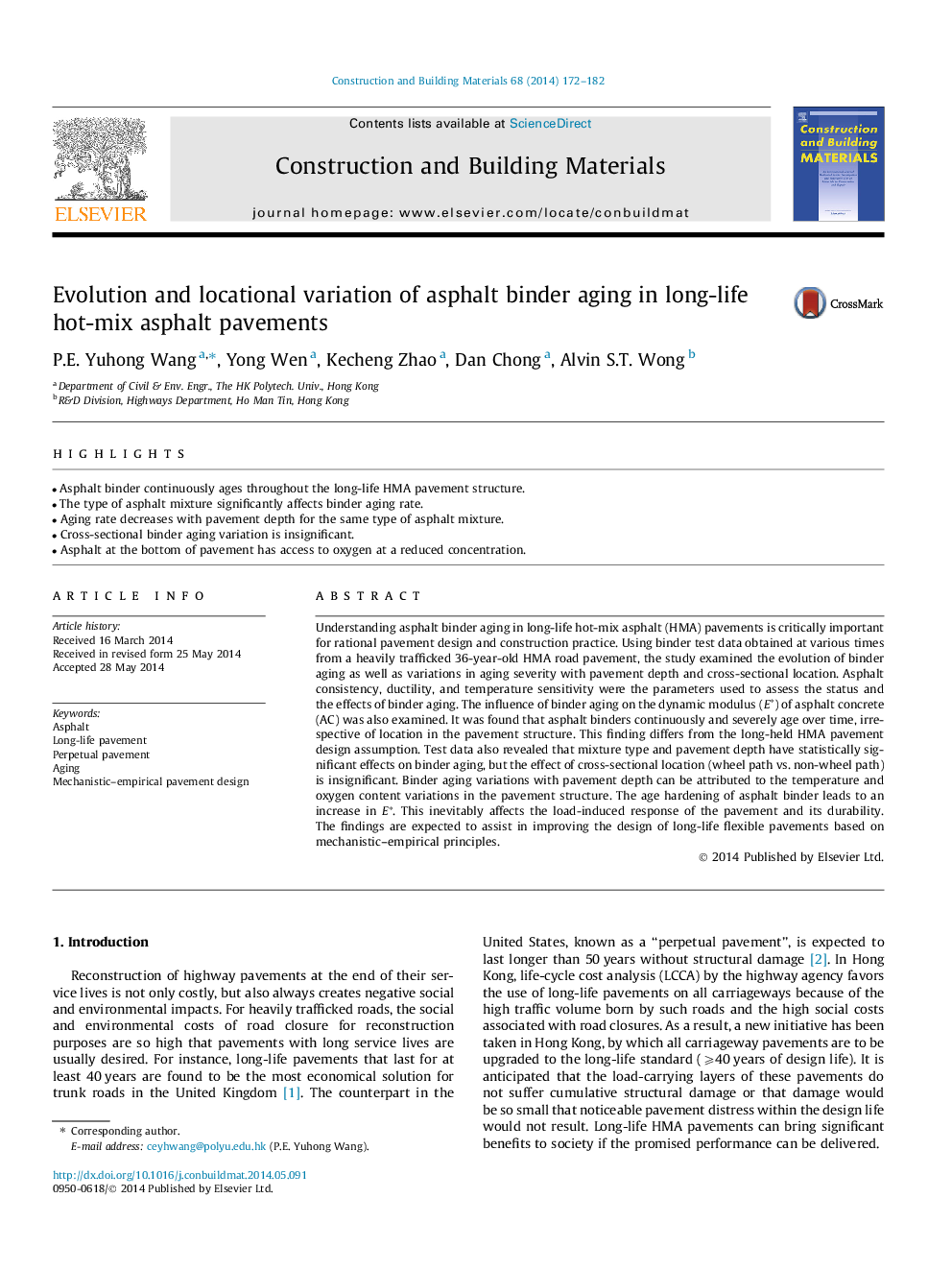| Article ID | Journal | Published Year | Pages | File Type |
|---|---|---|---|---|
| 6722349 | Construction and Building Materials | 2014 | 11 Pages |
Abstract
Understanding asphalt binder aging in long-life hot-mix asphalt (HMA) pavements is critically important for rational pavement design and construction practice. Using binder test data obtained at various times from a heavily trafficked 36-year-old HMA road pavement, the study examined the evolution of binder aging as well as variations in aging severity with pavement depth and cross-sectional location. Asphalt consistency, ductility, and temperature sensitivity were the parameters used to assess the status and the effects of binder aging. The influence of binder aging on the dynamic modulus (Eâ) of asphalt concrete (AC) was also examined. It was found that asphalt binders continuously and severely age over time, irrespective of location in the pavement structure. This finding differs from the long-held HMA pavement design assumption. Test data also revealed that mixture type and pavement depth have statistically significant effects on binder aging, but the effect of cross-sectional location (wheel path vs. non-wheel path) is insignificant. Binder aging variations with pavement depth can be attributed to the temperature and oxygen content variations in the pavement structure. The age hardening of asphalt binder leads to an increase in Eâ. This inevitably affects the load-induced response of the pavement and its durability. The findings are expected to assist in improving the design of long-life flexible pavements based on mechanistic-empirical principles.
Related Topics
Physical Sciences and Engineering
Engineering
Civil and Structural Engineering
Authors
P.E. Yuhong Wang, Yong Wen, Kecheng Zhao, Dan Chong, Alvin S.T. Wong,
